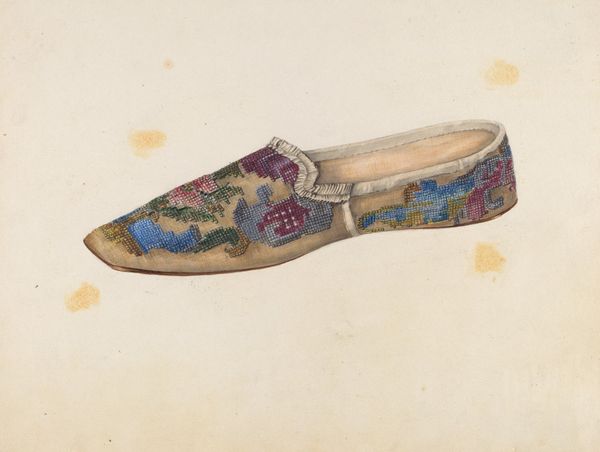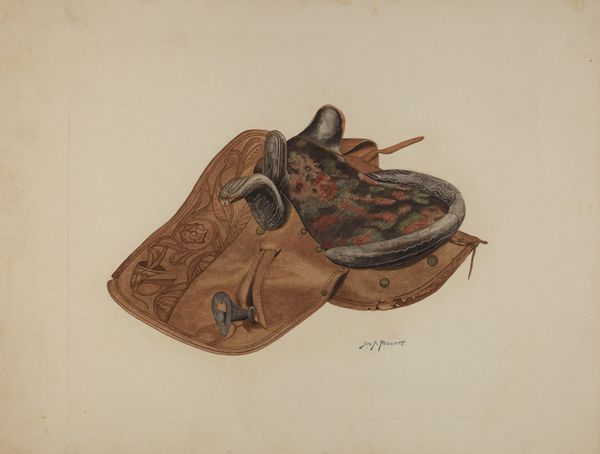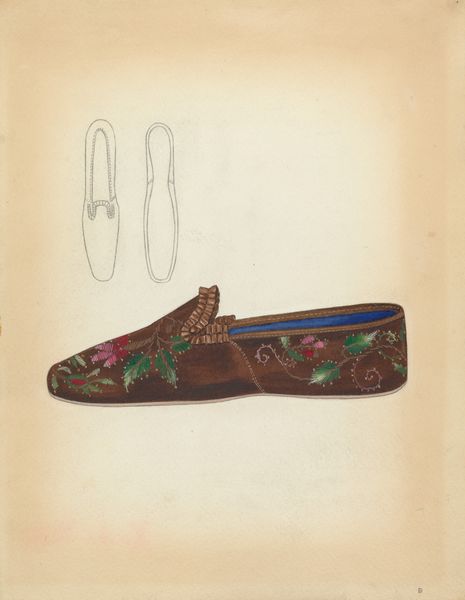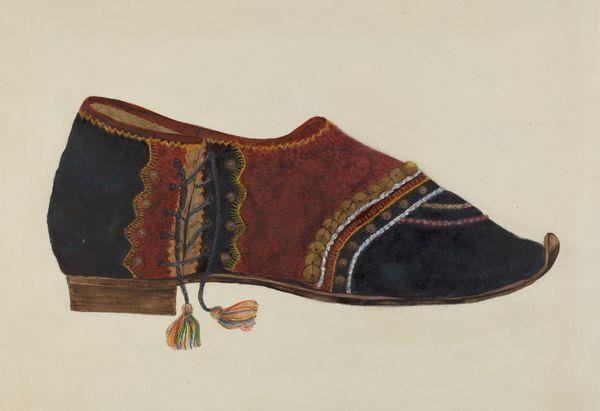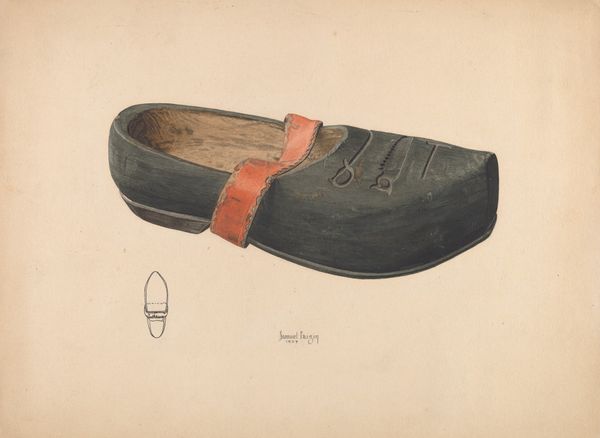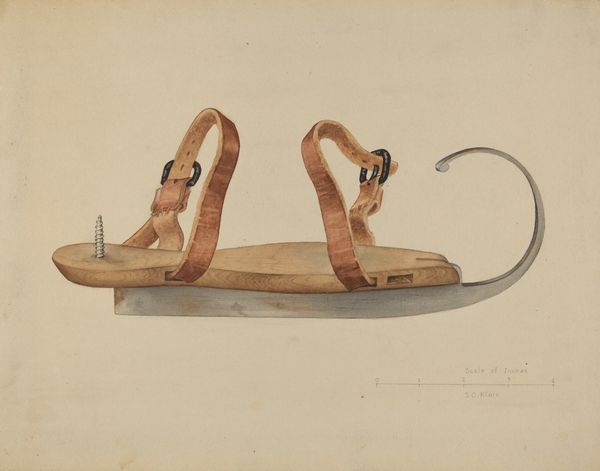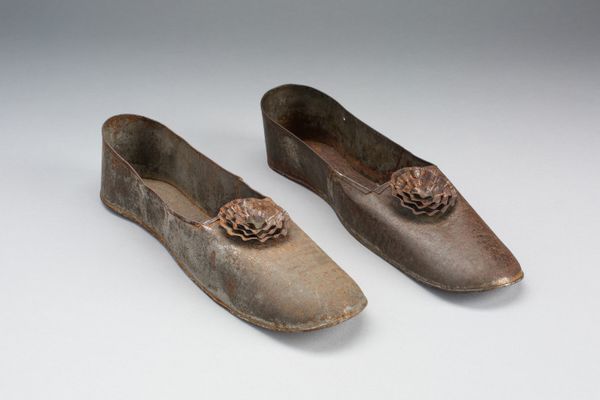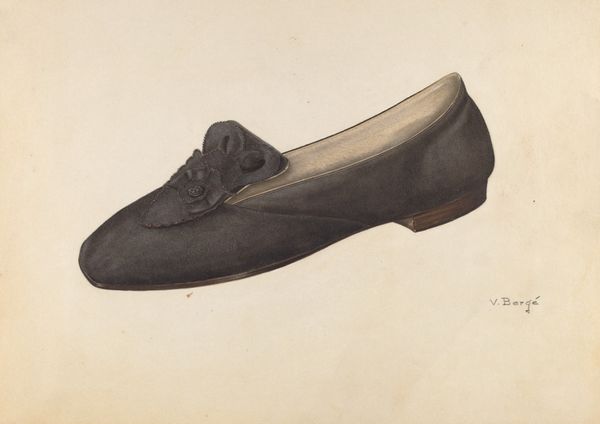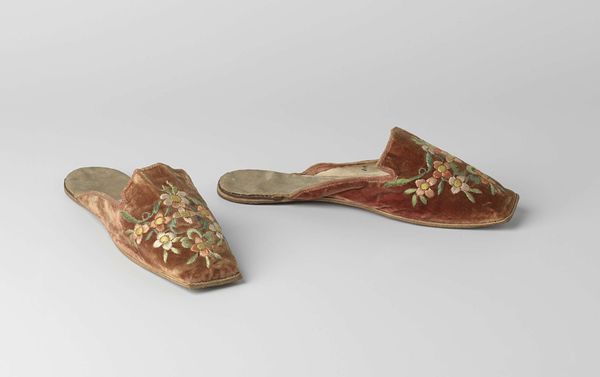
drawing, coloured-pencil, paper
#
still-life
#
drawing
#
coloured-pencil
#
figuration
#
paper
#
coloured pencil
#
watercolour illustration
#
watercolor
Dimensions: overall: 30.5 x 40.7 cm (12 x 16 in.) Original IAD Object: 6" high; 10" long; 4" wide
Copyright: National Gallery of Art: CC0 1.0
Editor: Here we have George File's "Toy Bank: Chief Big Moon," dating from around 1937, rendered in watercolor and colored pencil. There's an illustrative quality that makes it feel almost dreamlike. What strikes you when you look at this peculiar piece? Curator: The form itself is quite curious. It asks us to consider the interplay of representation and function. Note how File uses line and color to differentiate the distinct registers of the object. Do you observe how the contours, rendered with meticulous precision, demarcate the narrative scene from the purely decorative elements? Editor: I do. I'm also intrigued by the artist's choice of colors. The browns and muted tones seem deliberate, contributing to its antiquated feel. Why this approach? Curator: The color palette seems subservient to the underlying structure. Notice how the restrained use of color serves to accentuate the linear framework, almost as though we’re looking at a technical drawing rather than a purely representational image. It draws attention to the object's construction, doesn't it? Editor: Absolutely. It makes me think about the formal choices artists make to give certain impressions or draw your eye. Curator: Precisely. We begin to appreciate the artist's decisions less as mimetic strategies and more as deliberate structural choices. Each choice—color, line, composition—functions within a tightly controlled system, contributing to the overall aesthetic effect. Editor: This really opens up a different perspective to understanding the art object. It’s like seeing the skeleton beneath the skin. Curator: Indeed. Recognizing this elevates our viewing experience from mere appreciation to critical engagement.
Comments
No comments
Be the first to comment and join the conversation on the ultimate creative platform.
